This article was co-authored by Andre Kazimierski and by wikiHow staff writer, Madeleine Flamiano. Andre Kazimierski is a Painting Specialist and the Founder and CEO of Improovy, an on-demand house painting service startup. With more than 15 years of experience, Andre and the Improovy team use data and technology to streamline the home improvement process for homeowners and painting contractors. Andre started in the painting industry as a sophomore at Depaul University in Chicago, working with one of the nation’s largest painting companies to launch new cities and territories across the Midwest. Years later, he started 3rd Gen Painting and Remodeling and had a successful exit after growing the company to two different states.
There are 20 references cited in this article, which can be found at the bottom of the page.
This article has been viewed 48,060 times.
Popcorn ceilings were once popular, but they may pose problems. Some of these ceilings contain asbestos, which was banned in the 1970s. Since asbestos can affect your health, it’s important to test your ceilings for any traces of it. We'll tell you when asbestos is a risk and how to test if it's in your ceiling. Read this handy guide to stay informed and keep everyone safe from asbestos.
Steps
Taking a Sample with a Home Testing Kit
-
1Purchase an asbestos sampling kit. You can get an asbestos sampling kit online or from your local hardware store. This kit will contain everything you’ll need to safely remove the sample and contain it for shipping. Then, contact a certified asbestos-testing lab and ask about their sampling requirements.[8]
- An asbestos kit contains a face mask, disposable coveralls, gloves, wipes, sample bags, shipping materials, and sample submission documents.
- Ask for instructions about how the lab wants the sample collected and sent to them. They may also have specific requirements for the size of the sample.
- As an extra safety precaution, hire a professional to use your asbestos sampling kit.
-
2Move your furniture out of the room and turn off any ventilation. Before you take your sample, empty out the room. If you can’t do that, then move the furniture and everything else far away from the sampling area and cover it all with plastic drop cloths. Then, shut any windows or doors and turn off your healing or cooling system, as well as any fans.[9]
- Since even a small speck of asbestos can cause health problems, it’s a good idea to completely clear out the room where you’ll be taking a sample from.
- Shutting off the ventilation prevents asbestos particles from becoming airborne.
-
3Put on your safety gear. Wear disposable coveralls to protect your body from harmful chemicals. Put on thick disposable gloves, a respirator, and goggles. It's hazardous if asbestos touches your skin, so keep yourself totally covered.[10]
- To protect yourself from asbestos, wear a mask with HEPA filtered cartridges or an N-100, P-100 or R-100 NIOSH rating are specially designed to filter out asbestos particles.[11]
- Remember that you’ll need to toss everything that you’ve worn as outer protection, including goggles and gloves. Try to buy cheap items made to be disposable.
- While you are taking the sample and before you’ve fully cleaned up, don’t allow anyone else in the room.
-
4Lay plastic drop cloths on the floor. Get industrial plastic sheeting from your hardware store. To contain dust from any possible asbestos, place this sheeting on the floor directly underneath the part of the ceiling where you’ll take the sample. Use duct tape to secure the sheeting to the floor so that it won’t shift around. Set your ladder directly on top of the sheeting and beneath where you’ll take the sample.[12]
-
5Use a spray bottle filled with water to mist the room. When you’ve finished placing the plastic drop cloth in the right spot, get a spray bottle and mist the whole space with water. This helps to keep any dust particles from floating around.[13] It’s not necessary to douse any surfaces—just a quick spraying is fine.
-
6Loosen a sample with a utility knife or a chisel. Carefully press your chosen tool against an inconspicuous part of the ceiling, like one of its corners. Use the tip of your utility knife or chisel to form an outline around the area that you wish to remove. Don’t fully remove the piece of ceiling—instead, loosen it up.[14]
- Check with with the EPA, your chosen testing company, or your sample kit to determine how big of a piece you’ll need. Some samples can be relatively small while other labs might need a larger piece.
- If the piece begins to fall out when you try to loosen it, skip ahead to the step where you'll put the sample in plastic baggies.
-
7Fold a damp paper towel into the mouth of your pliers. Pick up your pliers. Open the mouth and place the damp paper towel inside. Then, close the mouth. When you use a damp paper towel, you prevent asbestos fibers from sticking to your pliers. [15]
-
8Pull the sample away from the ceiling with your pliers. Open the mouth of the pliers. Place the tips of the pliers against the ceiling so they grasp the edges of the piece you've chosen for your sample. Push the plier tips deeper into the ceiling material and gently squeeze them. Slowly pull your pliers away from the ceiling, taking the sample with you.[16]
- If the sample is stuck in the ceiling, you may need to rock it back and forth a bit, but do this very gently so you don't loosen any potential asbestos dust.
- Take your time when pulling out the sample from the ceiling. If you move too fast, you risk breaking up extra popcorn and creating additional dust.
-
9Drop the sample into a labeled plastic bag. Grab the plastic baggie that came with your kit or a sealable freezer baggie. Open it up and drop the sample inside.[17] Take out the wipe from the mouth of the pliers and put it in the bag as well. Run your fingers across the top seal until it's fully secure. Follow the kit's directions to mail the sample to their lab for testing.[18]
- For extra security, place this original bag in another one and seal that, too.
- Use a permanent marker to write your name, your city, and the date on the bag.
- Some sampling kits provide additional instructions regarding labeling the bag, such as using a particular stick-on label.
-
10Perform another round of water misting. Set the sample to the side of the room. Then, get a spray bottle of water and mist down the entire area. Spray everything in the room, even the plastic sheeting on the floor. This helps any stray asbestos particles fall down so they're not airborne.[19]
-
11Paint the sampled area. Get any type of latex spray paint that matches your ceiling. Spritz the spot where you took the sample to coat and cover it. This will keep the opened sample area from releasing any potentially dangerous dust over time. Throw the brush and paint away after use.[20]
- If you took a large sample, then add some drywall paste to the area before painting. Dip your drywall knife into a container of compound paste. Then, apply the compound paste to the wall. Use your drywall knife to smooth over the area. This will make your sample spot less noticeable.[21]
-
12Vacuum the space, then dispose of all your materials. Roll up the plastic flooring from one end to the other, place it in a large garbage bag, and seal it up. Thoroughly vacuum the entire room. When you're finished, take out the vacuum bag and throw it away. Once you’re done with your asbestos-containment project, carefully remove your overalls, gloves, and mask.[22]
- If you have a bagless vacuum, wipe down the inside of the canister with a damp paper towel. Throw the used towels away.
- Seal all garbage bags from the top to prevent any fibers from escaping into the air.[23]
Expert Q&A
-
QuestionDo you cut a hole into the drywall to take an asbestos sample?
 wikiHowOur goal at wikiHow is to deliver trustworthy articles that engage our readers and meet their informational and emotional needs. For 15 years, we've committed to our step-by-step teaching model, and we continue to refine our content to create the best how-to experience on the Internet. We’ve helped millions of people solve problems, learn new skills, and feel supported in the ordinary and complex moments of life.
wikiHowOur goal at wikiHow is to deliver trustworthy articles that engage our readers and meet their informational and emotional needs. For 15 years, we've committed to our step-by-step teaching model, and we continue to refine our content to create the best how-to experience on the Internet. We’ve helped millions of people solve problems, learn new skills, and feel supported in the ordinary and complex moments of life.
The most trusted how-to site on the internet. You only take a small piece from drywall in order to have enough material to send to a lab. Using a chisel or a utility knife, you'll lightly trace the tip around an outline with the right dimensions to loosen the sample. Then, you'll put a wet paper towel between the mouth of some pliers, which will keep any possible asbestos dust from falling down. When you carefully pull the small piece off with the pliers, you'll prevent any exposure to asbestos. You should then cover the spot where you took the sample with latex paint.
You only take a small piece from drywall in order to have enough material to send to a lab. Using a chisel or a utility knife, you'll lightly trace the tip around an outline with the right dimensions to loosen the sample. Then, you'll put a wet paper towel between the mouth of some pliers, which will keep any possible asbestos dust from falling down. When you carefully pull the small piece off with the pliers, you'll prevent any exposure to asbestos. You should then cover the spot where you took the sample with latex paint. -
QuestionIs a popcorn ceiling safe if it's been painted over 3 times?
 wikiHowOur goal at wikiHow is to deliver trustworthy articles that engage our readers and meet their informational and emotional needs. For 15 years, we've committed to our step-by-step teaching model, and we continue to refine our content to create the best how-to experience on the Internet. We’ve helped millions of people solve problems, learn new skills, and feel supported in the ordinary and complex moments of life.
wikiHowOur goal at wikiHow is to deliver trustworthy articles that engage our readers and meet their informational and emotional needs. For 15 years, we've committed to our step-by-step teaching model, and we continue to refine our content to create the best how-to experience on the Internet. We’ve helped millions of people solve problems, learn new skills, and feel supported in the ordinary and complex moments of life.
The most trusted how-to site on the internet. Painting over a popcorn ceiling is a way to "encapsulate" asbestos, which will contain it. Spray paint is best so that you don't disturb the popcorn ceiling and make it crumble. Make sure to vacuum the ceiling first to remove any loose particles, then use an oil-based primer before you apply any paint. An acrylic latex paint is ideal. If you use a sprayer with a tip size that's 517 of 617, you'll be more quick and efficient with your project.
Painting over a popcorn ceiling is a way to "encapsulate" asbestos, which will contain it. Spray paint is best so that you don't disturb the popcorn ceiling and make it crumble. Make sure to vacuum the ceiling first to remove any loose particles, then use an oil-based primer before you apply any paint. An acrylic latex paint is ideal. If you use a sprayer with a tip size that's 517 of 617, you'll be more quick and efficient with your project. -
QuestionIs it safe to remove the popcorn ceiling yourself?
 Andre KazimierskiAndre Kazimierski is a Painting Specialist and the Founder and CEO of Improovy, an on-demand house painting service startup. With more than 15 years of experience, Andre and the Improovy team use data and technology to streamline the home improvement process for homeowners and painting contractors. Andre started in the painting industry as a sophomore at Depaul University in Chicago, working with one of the nation’s largest painting companies to launch new cities and territories across the Midwest. Years later, he started 3rd Gen Painting and Remodeling and had a successful exit after growing the company to two different states.
Andre KazimierskiAndre Kazimierski is a Painting Specialist and the Founder and CEO of Improovy, an on-demand house painting service startup. With more than 15 years of experience, Andre and the Improovy team use data and technology to streamline the home improvement process for homeowners and painting contractors. Andre started in the painting industry as a sophomore at Depaul University in Chicago, working with one of the nation’s largest painting companies to launch new cities and territories across the Midwest. Years later, he started 3rd Gen Painting and Remodeling and had a successful exit after growing the company to two different states.
Painting Specialist If it's possible that your ceiling contains asbestos, I highly recommend that you hire a qualified and certified asbestos removal professional to avoid any problems.
If it's possible that your ceiling contains asbestos, I highly recommend that you hire a qualified and certified asbestos removal professional to avoid any problems.
Warnings
- Make sure to take every safety precaution when testing for asbestos. If you skip a safety step, you could potentially expose your skin to it.⧼thumbs_response⧽
- Always wear protective gear to avoid exposure. Unless you get an x-ray, you won't be able to know if you've breathed in asbestos. You won't cough or sneeze, and your skin won't itch, so it will be harder to know if you should seek care.[28]⧼thumbs_response⧽
Things You’ll Need
- Asbestos sampling kit
- 2 sealing plastic baggies
- Disposable coveralls
- Disposable gloves
- Safety goggles
- Safety mask
- Plastic drop cloths
- Utility knife
- Chisel
- Pliers
- Tape
- Paper towels or wet wipes
- Permanent marker
- Spray bottle with water
- Latex spray paint
- Paint brush
- Drywall paste (optional)
- Large trash bags
- Vacuum cleaner or mop
References
- ↑ https://www.ncbi.nlm.nih.gov/pmc/articles/PMC4984962/
- ↑ https://www.lungcancercenter.com/lung-cancer/risk-factors/asbestos/when-was-asbestos-banned/
- ↑ https://www.epa.gov/asbestos/protect-your-family-exposures-asbestos
- ↑ https://www.epa.gov/asbestos/protect-your-family-exposures-asbestos
- ↑ https://www.lungcancercenter.com/lung-cancer/risk-factors/asbestos/when-was-asbestos-banned/
- ↑ https://www.epa.gov/asbestos/asbestos-professionals
- ↑ https://www.asbestos.com/exposure/home/
- ↑ Andre Kazimierski. Painting Specialist. Expert Interview. 26 January 2022.
- ↑ https://www.asbestos.com/blog/2018/07/24/asbestos-popcorn-ceiling-safe/
- ↑ https://www.worksafe.govt.nz/topic-and-industry/asbestos/ppe-when-working-with-asbestos/
- ↑ https://www.health.state.mn.us/communities/environment/asbestos/homeowner/ppe.html
- ↑ https://www.dir.ca.gov/title8/1529.html
- ↑ Andre Kazimierski. Painting Specialist. Expert Interview. 26 January 2022.
- ↑ https://www.dot.ny.gov/main/business-center/carls-i495/repository/Asbestos_Assessment_Report_20130927.pdf
- ↑ https://www.sprep.org/attachments/pacwaste/SPREP_Asbestos_Report-_RMI_-_Final.pdf
- ↑ http://envirohealth.com.au/wp-content/uploads/2017/09/envirohealth-asbestos-sample-testing-form.pdf
- ↑ https://www.state.nj.us/health/ceohs/asbestos/asbestos-faq/
- ↑ https://www.kitsapgov.com/pw/Pages/Asbestos.aspx
- ↑ https://www.cpsc.gov/safety-education/safety-guides/home/asbestos-home
- ↑ https://www.sfdph.org/dph/files/EHSdocs/ehsAsbestos/AsbestosFAQ.pdf
- ↑ https://homesteady.com/info-8298417-tips-spackling-ceiling.html
- ↑ https://www.cpsc.gov/safety-education/safety-guides/home/asbestos-home
- ↑ https://www.cpsc.gov/safety-education/safety-guides/home/asbestos-home
- ↑ https://www.epa.gov/asbestos/asbestos-professionals
- ↑ https://www.health.state.mn.us/communities/environment/asbestos/workprac/awpencmainrep.html
- ↑ https://www.epa.gov/asbestos/protect-your-family-exposures-asbestos
- ↑ https://www.cpsc.gov/safety-education/safety-guides/home/asbestos-home
- ↑ https://www.health.state.mn.us/communities/environment/asbestos/homeowner/heffects.html
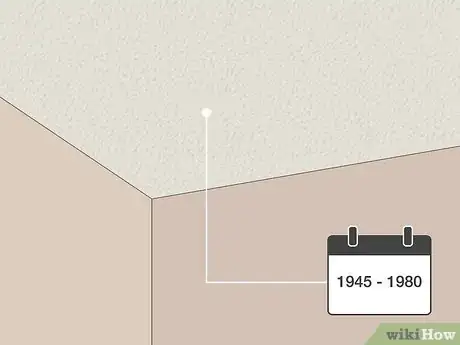
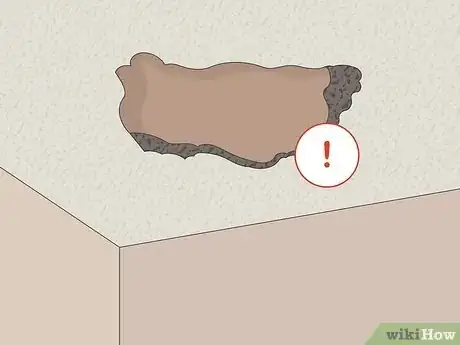
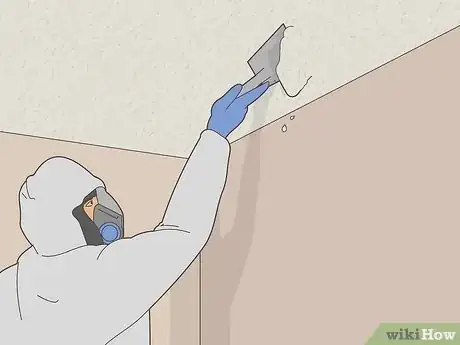
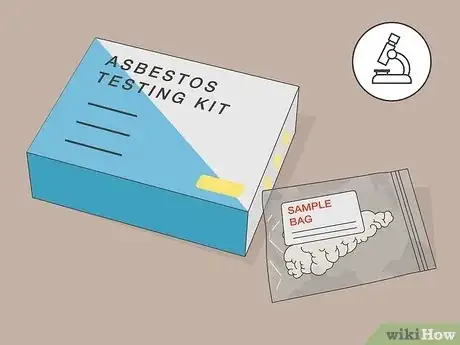
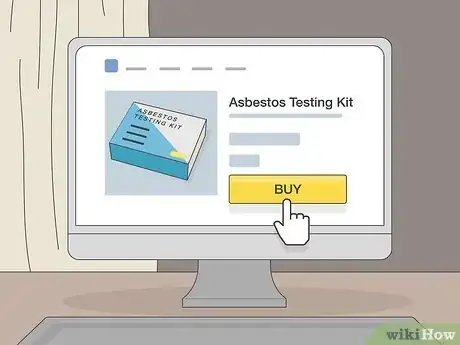

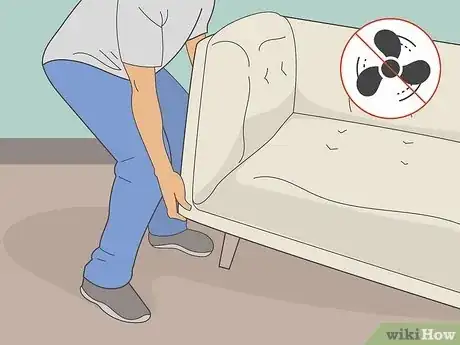
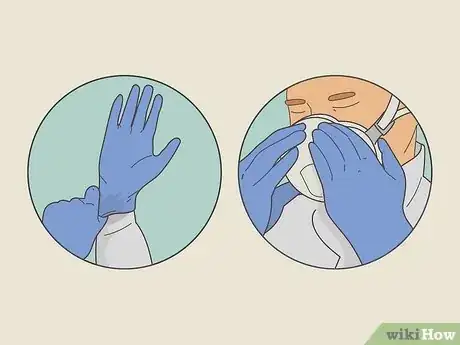
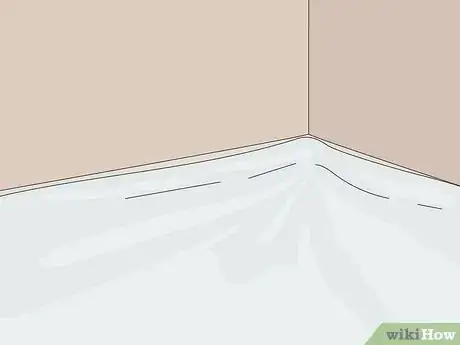
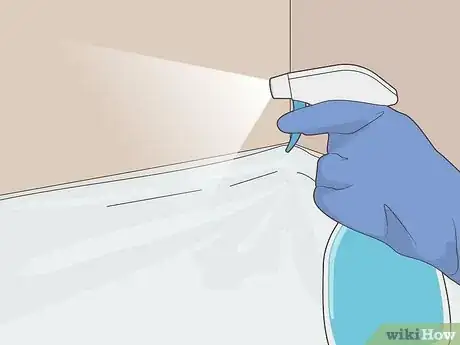
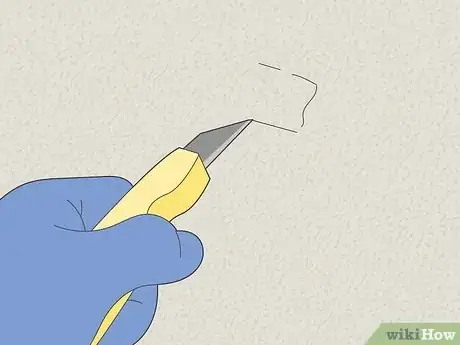
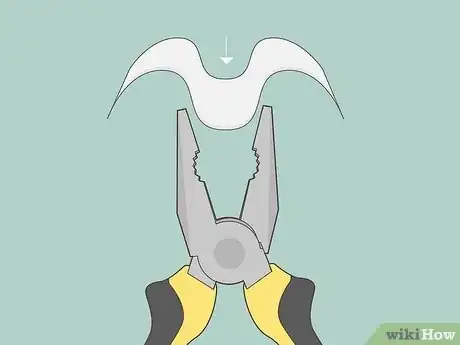
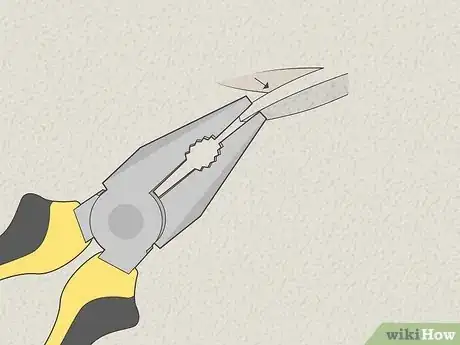
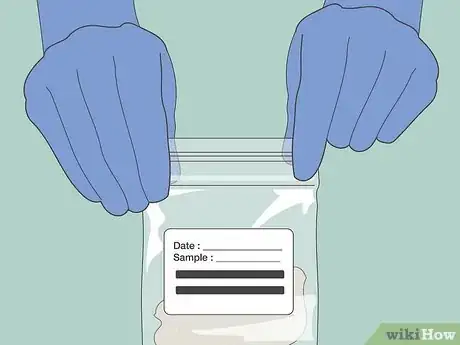
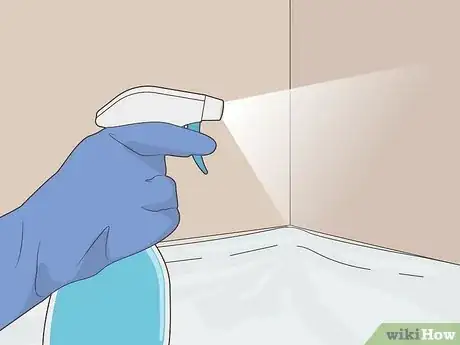
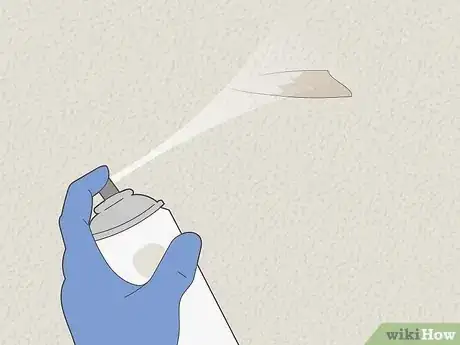
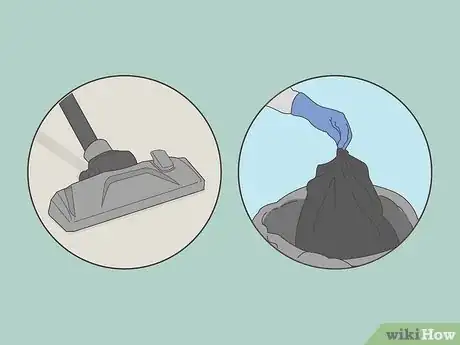
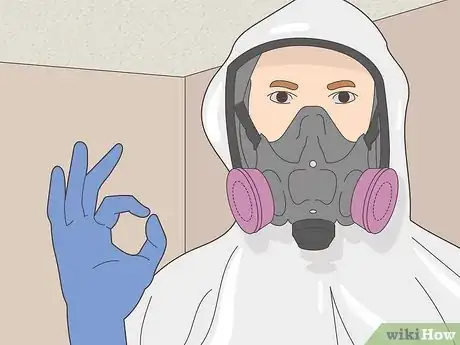
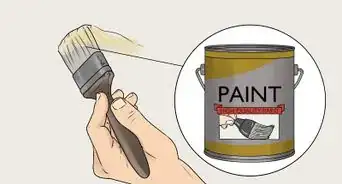

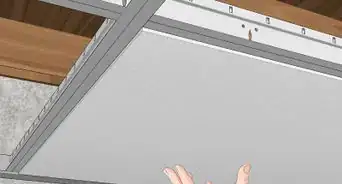
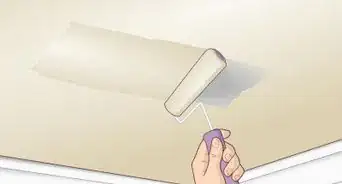



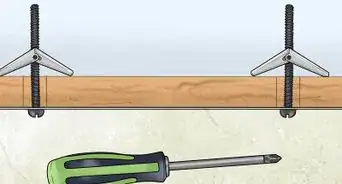
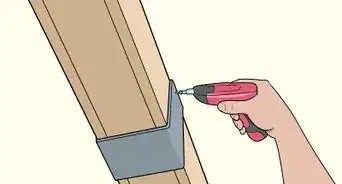
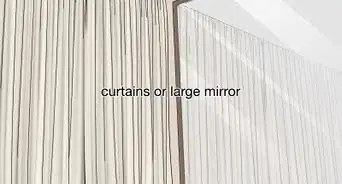
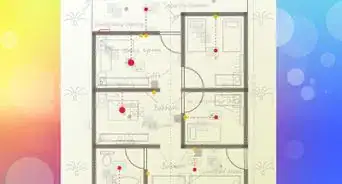
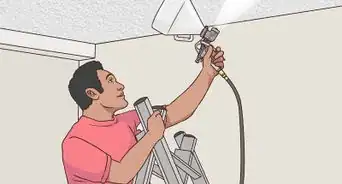

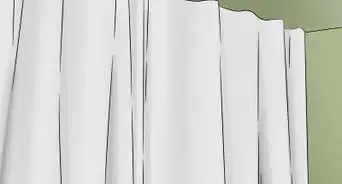







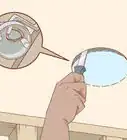
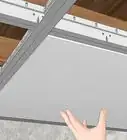
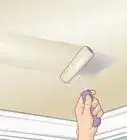




































Medical Disclaimer
The content of this article is not intended to be a substitute for professional medical advice, examination, diagnosis, or treatment. You should always contact your doctor or other qualified healthcare professional before starting, changing, or stopping any kind of health treatment.
Read More...